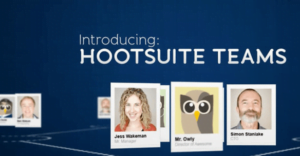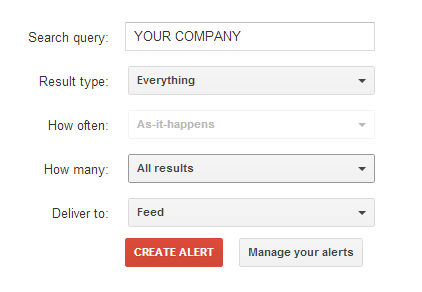 Doing Online Reputation Management the right way
Doing Online Reputation Management the right wayWhen it comes to capturing a significant market share in your industry, winning over customers, and experiencing financial growth, one of the most important things you need to be aware of is how the public views you. Right from day one, a company starts building a reputation with its audience. As the company’s reputation within its industry becomes more positive, the company experiences growth, find a wider audience, and is held in higher regard. Previously, maintaining a good reputation was easy. All a large company needed to do to avoid a bad reputation was steer clear of public humiliation so great that it would become news worthy, and deal with customer complaints on a case by case basis. With Social Media, however, online reputation management has become a whole different ball game. All of a sudden, an unhappy customer need only take their complaints to a company’s Facebook page and suddenly a company’s entire online audience becomes witness to the ill-treatment of a company’s client base. With Social Media, someone need only voice their complaints via Twitter and hashtag it with the company’s name, and with a single retweet, the complaint can be shared with thousands of potential customers and clients. To take this a step further, a company’s own voice via Social Media can be a huge turn off to their target audience. Take for example, the UK-based fashion designer, Celeb Boutique. Following the horrific movie theatre shooting in Aurora Colorado, one member of the Celeb Boutique staff noticed Aurora was trending and tweeted “#Aurora is trending, clearly about our Kim K inspired #Aurora dress”. Assuming the trend had something to do with the company’s dress also called “Aurora”, the Tweet seemed appropriate. Given the actual circumstances behind #Aurora, this Tweet became one of the worst Social Media Blunders of 2012. As many company’s are only beginning their first foray into Social Media Marketing, they run a real risk of committing embarrassing blunders such as that made by Celeb Boutique. How do you avoid making mistakes and ensure that your online reputation is a good one? Here are some great tips:
When it comes to managing your online reputation, a great advantage you’ll have is your Google ranking. By sharing your own content, having press releases, and answering to your audience about your favourite topic, yourself, you guarantee that when someone enters you or your company’s name into Google, your site, and your Social Media profiles will be the first pages on Google’s SERP. Because the first five results returned in a search are usually the ones a user looks at, maintaining possession of the top few search results, you limit the popularity of damaging material published about you, and you reduce your exposure to negativity whilst increasing the potential positive. For this reason, engaging in strong Search Engine Optimization practices is one of the best weapons in your online reputation management arsenal. Tip #2: Avoid a Bad Reputation by Proxy When it comes to your online reputation, what you promote is just as important as who you are. It is important that both your own online persona, and your company’s online persona promote favourable ideals. In a tongue and cheek Tumblr blog titled “Actual Facebook Graph Searches“, Tom Scott puts a person’s online reputation into perspective. One of Scott’s comical Facebook Graph Searches included “married people who like prostitutes” returned a results page of dozens of users. Presumably these people came across a prostitutes page and “liked” it sarcastically, however, when it comes to you and your company’s reputation are you willing to risk your audience not quite getting your sense of humour? It’s important to avoid following liking, or sharing material from questionable sources whose reputation might be unfavourable.

Be careful what you associate with because you never know where it might show up.
It is important to remember that what happens online stays online…forever. While it is easy to delete a Tweet or erase a Facebook post, the impression that fly-by-night post can reverberate throughout the world wide web for days, weeks, and months to come leaving a damaged reputation in its wake. A good example of this comes from HMV UK’s recent Twitter debacle. On the 31st of January, HMV UK’s Twitter account, @hmvtweets, sent out a series of unexpected tweets to the ailing music retailer’s 65,000+ followers. The marketing employee in charge of HMV’s Twitter account took it upon herself to live tweet the dismissal of herself and some 60 other HMV employees using the hashtag #hmvXFactorFiring. While the company caught on to what was happening on Twitter almost immediately and deleted all of the #hmvXFactorFiring tweets just minutes after the first tweet was posted, the damage was already done. Twitter users who saw the original Twitter posts did multiple screen captures, shared and retweeted the damning Tweets, and HMV quickly became Twitter fodder as the #hmvXFactorFiring tweets became viral and still haunt the company weeks later. How does this apply to you and your company? Well the lesson to be learned there is that while you can delete content, you can’t really take back what was said. As soon as a damaging post is read by even one user, it is already too late to take it back.
There are a number of practical reasons why you would want to use Social Media management tools such as Hootsuite. There are simple reasons like the ease and practicality of being able to access all of your Social Media profiles from one platform. You can schedule Tweets, so even when you’re not in the office, Hootsuite is working for you. With the introduction of Hootsuite Teams, however, an already spectacular Social Media management tool got even better. With Hootsuite Teams, it’s possible to give multiple members of your marketing team varying levels of access to your Social Media profiles. This means that if you outsource Social Media Marketing, have a team which collaborates on your Social Media posts, or have a junior member of your marketing team in charge of your Social Media accounts, you can set several restrictions with Hootsuite Teams, so that the individuals responsible for your Facebook, Twitter, Google+, etc account are only able to create a draft post which is then fed into Hootsuite to await the appropriate party’s approval. Your ability to control permissions with Hootsuite is so specific that if you are responsible for a number of different Social Media accounts, you are able to set a varying level of access for each individual account.
With Hootsuite Teams, it’s possible to give multiple members of your marketing team varying levels of access to your Social Media profiles. This means that if you outsource Social Media Marketing, have a team which collaborates on your Social Media posts, or have a junior member of your marketing team in charge of your Social Media accounts, you can set several restrictions with Hootsuite Teams, so that the individuals responsible for your Facebook, Twitter, Google+, etc account are only able to create a draft post which is then fed into Hootsuite to await the appropriate party’s approval. Your ability to control permissions with Hootsuite is so specific that if you are responsible for a number of different Social Media accounts, you are able to set a varying level of access for each individual account.
Google alerts can be a great way to stay informed, keep up to date on news stories, track online articles about your favourite band, or what have you. Google Alerts can serve an even more practical purpose as well. Setting up a Google Alert for your own company can be a great way for you to monitor your online reputation.

Use Google Alerts to bring news and comments about your company to your attention
Google Alerts is a free service offered by Google. With Google Alerts, you can monitor all the content on the internet, as it is viewed by Google’s bots, for content such as blogs, or Social Media posts which mention your company. When your company’s name, or the words you’ve asked Google to look for in your Google Alert show up anywhere on the internet, Google all e-mail you a link to the content. Google Alerts allows you to see how you are being received, read what people are writing about you, and respond accordingly. While Social Media has provided an entirely new and exciting dimension to online marketing, it also presents a new challenge when it comes to reputation management. The above tips and tools are just a few ways you can maintain and improve your online reputation. For more information on guidance on reputation management, please contact Guaranteed SEO.